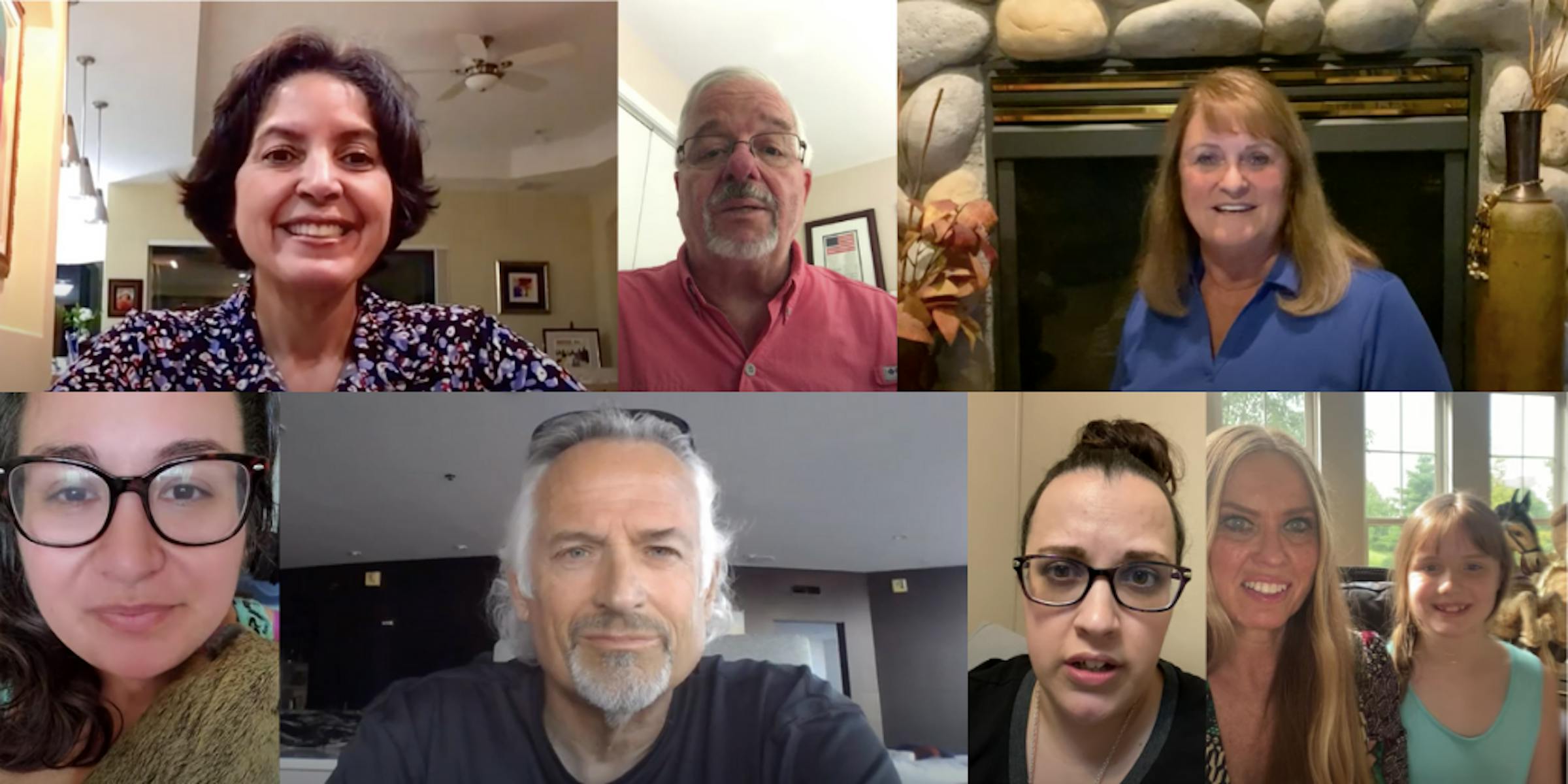What’s it like to live with or care for someone with pulmonary fibrosis? Community members answer.
For many of the three million people worldwide living with the respiratory disease pulmonary fibrosis (PF), the journey to diagnosis and treatment can be fraught with challenges.
Part of a family of 200 related lung diseases, PF can easily be disguised by a confounding set of symptoms and ailments. About one-third of people are misdiagnosed for well over a year before reaching a PF diagnosis — and once they do, treatment options are limited.
Earlier this year, MATTER announced a partnership with Three Lakes Foundation, an organization founded by a family personally affected by PF, to co-develop a program to help source novel and innovative solutions for PF. But before issuing a challenge to innovators, it was crucial to learn more about what PF patients, caregivers and healthcare providers had to say about the challenges facing PF. In June, Three Lakes Foundation, Pulmonary Fibrosis Foundation and MATTER launched the PF Perspectives Project to collect these stories and better understand the biggest challenges to living with, or caring for someone with PF, today.
Of the dozens of submissions, five participants received $500 cash prizes and will have the opportunity to collaborate with innovators throughout the challenge period.
These are their stories.
You can hear more from PF community members through upcoming PF Innovation Challenge events and programs, including a virtual conversation and Q&A on August 18.
Maryluz, patient & healthcare provider
Challenge: Awareness and diagnosis
“[We need] a joint effort of empowering patients to speak up to their primary care providers…and investing in education of primary care providers about this disease.”
Cyril-Patrick, patient
Challenge: Diagnosis
“The underlying problem is that the necessary information is unobserved, unrecognized or insufficient for the primary care provider to diagnose PF, as this is a rare disease and we practice prescriptive medicine.”
What type of improvement will make the biggest change in PF? In my experience of a lung transplant, the most pressing issue is time to diagnosis. Currently, primary care physicians (PCPs) follow correct procedures, but pulmonary fibrosis (PF) goes largely undetected for up to four years. In my case, this has been known to cause anxiety, panic attacks, poor quality of life, job loss, hospitalization and even death. Fortunately, my 40-year career in the semiconductor industry lends itself to use practices of gathering knowledge and embedding it into the software to improve time-to-diagnosis by 4-10X. The underlying problem is that the needed information is unobserved, unrecognized, or insufficient for the PCP to diagnose PF, as this is a rare disease and we practice prescriptive medicine. What is needed is a new innovative approach to collect the right knowledge and embed it into software that is merged with the patient data — ultimately uncovering problems, seen or unseen, that turn out to be major problems. This innovation can revolutionize the medical industry. Examples are: Crackles that a pulmonologist can hear but not the PCP, the use of a spirometer to measure breath early for those who cough and have shortness of breath, reading of an X-ray… where one radiologist can recognize IPF and another cannot. Thus, CT scans and X-rays could detect lung issues much earlier. There is a pattern to the X-ray and HCRT that is known to the pulmonologist, but not to the general PCP. The next step is an HRCT scan that a pulmonologist can read at first glance.
Ed, patient
Challenge: Coordination of care
“I was surprised to learn the experts I engaged were focused on narrow segments of my health.”
Max, healthcare provider
Challenge: Quality of life and oxygen
“I believe that if we better understood the root causes of pulmonary fibrosis, we would be able to design more effective treatment, transforming the everyday experiences of patients living with pulmonary fibrosis and allow them to live their lives to the fullest.”
Pulmonary fibrosis is a disease that can affect patients of all ages and from all walks of life. As an early career lung-disease specialist, I have seen the effects of this disease first hand, from the frustrating delay of diagnosis which can span months and even years, to the progression of symptoms that can render even the simplest pleasures of life impossible. I enjoy caring for patients in a comprehensive interstitial lung disease clinic and always strive to provide a clear diagnosis and personalized treatment plan for each patient, in order to improve my patient’s quality of life and outcomes. And while the current available treatments certainly help, I also see the limitations of these medications and the challenges my patients face each and every day. These include obtaining expensive medications, ensuring access to a reliable supply of supplemental oxygen, and making sure they can still do things that bring them joy. But the biggest barrier to better care, in my opinion, is our limited knowledge of the causes of pulmonary fibrosis. Because of this, I also spend time in the laboratory performing research to better pinpoint the origins of pulmonary fibrosis. I believe that if we better understood the root causes of pulmonary fibrosis, we would be able to design more effective treatment, transforming the everyday experiences of patients living with pulmonary fibrosis and allow them to live their lives to the fullest. I look forward to working with others in the pulmonary fibrosis community to make this a reality.
Beatrice, caregiver
Challenge: Oxygen
“At a doctor’s appointment, the piece that attaches the oxygen to the portable tank broke off while I was getting my husband a new tank.”
My husband has had pulmonary fibrosis for many years. It was heartbreaking to have this happen to my husband, who was always my walking partner all around NYC. There are a lot of challenges when going to doctor’s appointments, like getting used to the oxygen equipment or getting help from others when problems arise. At a doctor’s appointment, the piece that attaches the oxygen to the portable tank broke off while I was getting my husband a new tank. I was in a hospital and asked the person at the front desk. He told me to go inside and ask a nurse. The nurse had to wait for an available tank. I was frantic because my husband couldn’t breathe without oxygen and I couldn’t get help fast enough. They didn’t have any oxygen available and it would take some time. I had to repair the piece myself by using my teeth somehow, and finally got the piece connected to the oxygen tank. I had to take my husband home right away. I have had many incidents with the tanks — like being unable to tighten the tops and the hissing sounds not stopping. I had to add a washer to the tank. Doctor’s offices and hospitals should have oxygen available right away to people that need it. Also, workers should be more caring and helpful and more oxygen training should be given to caregivers.
Want to hear more perspectives on pulmonary health? Join Three Lakes Foundation and MATTER on August 18 for an interactive discussion with patients, healthcare providers and innovators. The event will further explore the most pressing challenges facing the PF and broader respiratory health community, and the complexities that COVID-19 brings.



